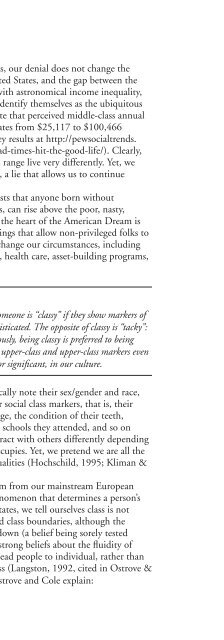WINTER 2012 - National Association of Schools of Public Affairs and ...
WINTER 2012 - National Association of Schools of Public Affairs and ...
WINTER 2012 - National Association of Schools of Public Affairs and ...
You also want an ePaper? Increase the reach of your titles
YUMPU automatically turns print PDFs into web optimized ePapers that Google loves.
Many researchers have explored the antecedents <strong>of</strong> the production <strong>of</strong> relevant<br />
<strong>and</strong> high-quality research, investigating such issues as the types <strong>of</strong> research done<br />
in PhD programs (McCurdy & Cleary, 1984; White, 1986), methodological<br />
<strong>and</strong> quantitative rigor in published research (Box, 1992; Houston & Delevan,<br />
1990; Perry & Kraemer, 1986; Stallings & Ferris, 1988; Vijverberg, 1997;<br />
Wright, Manigault, & Black, 2004), <strong>and</strong> quantitative training in doctoral<br />
programs (Brewer, Facer, O’Toole Jr., & Douglas, 1998; Rethemeyer & Helbig,<br />
2005). This paper builds on the work <strong>of</strong> Desai (2008) <strong>and</strong> M<strong>and</strong>ell (2008) <strong>and</strong><br />
explores the other side <strong>of</strong> the process by examining one <strong>of</strong> the antecedents that<br />
influence the extent to which research is used in practice: the development <strong>of</strong><br />
quantitative (specifically statistical) skills to underst<strong>and</strong> <strong>and</strong> use research findings.<br />
The production-consumption <strong>of</strong> the research cycle captures the essence <strong>of</strong> what<br />
Rousseau (2006) terms “evidence-based management” (see also Rousseau &<br />
Figure 1.<br />
Model <strong>of</strong> Research Production <strong>and</strong> Research Use<br />
Researcher<br />
quantitative<br />
(statistical) skills<br />
to produce quality<br />
<strong>and</strong> relevant research<br />
Other antecedents <strong>of</strong> quantity,<br />
quality <strong>and</strong> relevance <strong>of</strong><br />
research production<br />
Quantity, quality,<br />
<strong>and</strong> relevance <strong>of</strong><br />
research production<br />
+<br />
+<br />
+ +<br />
Success <strong>of</strong> policy<br />
implementation <strong>and</strong> increased<br />
perceived value <strong>and</strong> worth <strong>of</strong><br />
statistics use<br />
Techniques in Teaching Statistics<br />
Other antecedents <strong>of</strong><br />
extent <strong>and</strong> adequacy <strong>of</strong><br />
research use<br />
+<br />
Extent <strong>and</strong><br />
adequacy <strong>of</strong><br />
research use<br />
Practitioner<br />
quantitative<br />
(statistical) skills to<br />
underst<strong>and</strong> <strong>and</strong> use<br />
research findings<br />
Arrows indicate the direction <strong>of</strong> causality between variables. Signs (+ <strong>and</strong> –)<br />
indicate the polarity <strong>of</strong> the relationship. A + sign means that, all else equal,<br />
increases in the variable at the beginning <strong>of</strong> the arrow will result in increases in<br />
the variable at the end <strong>of</strong> the arrow. Similarly, a – sign means that, all else equal,<br />
increases in the variable at the beginning <strong>of</strong> the arrow will result in decreases in<br />
the variable at the end <strong>of</strong> the arrow.<br />
Reinforcing loop polarity (denoted by R in the loop identifier) indicates the<br />
existence <strong>of</strong> a self-reinforcing (also called positive) feedback process.<br />
Journal <strong>of</strong> <strong>Public</strong> <strong>Affairs</strong> Education 109<br />
+

















